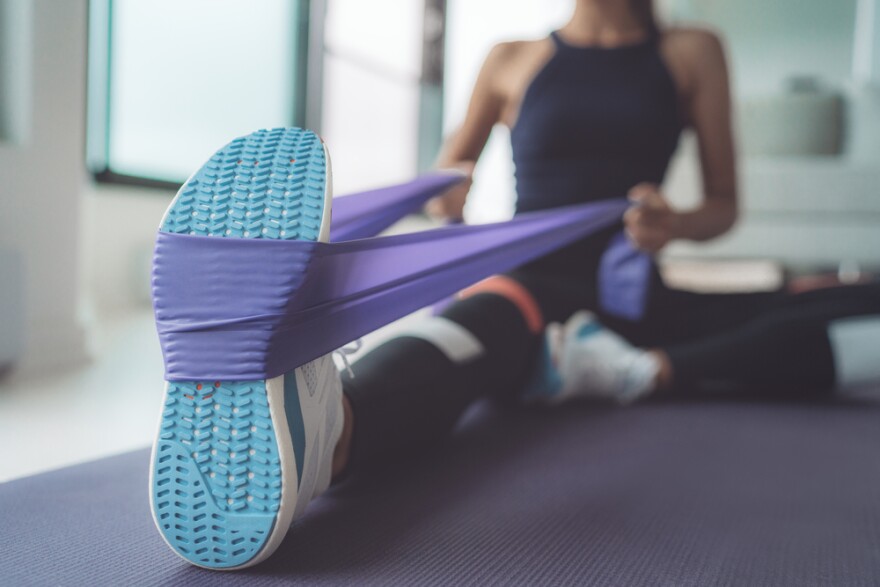Yet another reason to get moving.
A new study concludes regular exercise may reduce the chance of early or premature death across all causes by up to 40%. That's after comparing past studies of people who did not exercise with those who just started.
Tyler Ingersoll, D.O., a sports medicine and family medicine specialist at Texas Health Harris Methodist, explains how and what type of exercise can have that kind of impact.
Ingersoll: Regular exercise shows that cardiovascular benefit, the reduction of all-cause mortality, meaning the more you stress the heart, the more you promote oxygen through the blood flow to different tissues and muscle, can improve chronic disease management.
It can lower your risk of cardiovascular disease, whether it's from a reduction in atherosclerosis. It can remodel your heart to make that pump stronger to lower your risks of hypertension. And controlling both of those things overall will reduce the risk of suffering a premature heart attack or stroke.
Baker: Does any one type of exercise produce this result over others?
Ingersoll: Traditionally, it used to be cardiovascular benefit, but now we're seeing a significant impact in resistance training.
So, unfortunately, with obesity rates in the United States continuing to climb, one in every five patients is considered overweight, and one in every three individuals is considered obese, resistance training is the only statistically significant improvement to translate into meaningful fat loss.
Fat loss reduction, or 10% of your body weight reduction overall, has a significant impact on metabolic health. When someone is exercising with cardiovascular endurance, either on a treadmill, walking, or on the StairMaster, they're improving their heart health. That translates significantly to hypertension and cholesterol disease. However, resistance training is more beneficial for weight loss. And so, the less weight an individual carries will certainly translate into long-term health.
Baker: What exactly does resistance training do to achieve that effect, though?
Ingersoll: It increases the GLP signal. Now, the GLP signal, which lives in the stomach and the gut, that is also found on the muscle cells and the muscle receptors. So, it's a normal hormone that lives in the body that is more directly activated when you stress the muscle with resistance training.
Baker: How do you begin resistance training if you're just getting started with exercise?
Ingersoll: Baby steps. If you don't have any access to weights, you can use everyday objects like a gallon of milk or a can of soup or your grocery bags and load it up with common household items to allow you just to get five or 10 pounds at a minimum.
One popular trend that I find when I'm talking with patients is the benefit of a weighted vest. One common question is if it actually is doing anything. Is this something that has weight behind it or is this something more of a fad?
And the bottom line is there are three important things to take away:
- Weighted vests are really important when people use them for walking because it increases your metabolic demand, which increases your heart rate, and allows more oxygen to go to those muscles. So, this is a good cardiovascular benefit.
- A second benefit is that it allows more lower-body strength and power. So when you have more weight on your body, it requires more force to get moving, and that in turn strengthens that lower body chain. And when your quads are stronger, it allows your bones to be stronger and reduces your risk of falls.
- Lastly, any overweight individuals who are wearing a weighted vest when walking or exercising. Over four weeks, it has been shown to lead to a 10% reduction in their fat and improvement in their lean.
Baker: Obviously, the earlier you start regular exercise, the better, but is it ever too late to try to achieve that benefit?
Ingersoll: Absolutely not. Even if you are considered a later adult or you're beyond age 50, if you start moving now, you can still see that improvement or 40% reduction in cardiovascular benefit and drop in all-cause mortality. It's never too late to exercise. I try to encourage every patient that comes through the door to exercise every day if you can.
RESOURCES:
- WHO Guidelines on Physical Activity and Sedentary Behaviour.
- Lower your risk of early death by some 40% with this lifestyle change
- Massive study uncovers how much exercise is needed to live longer
Copyright 2025 KERA


